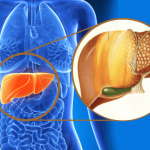 The condition – Nonalcoholic steatohepatitis (NASH) is increasing in prevalence, in tandem with the obesity epidemic, in both children and adults. Identifying specific dietary components that drive NASH is important for successful management of this disease.
The condition – Nonalcoholic steatohepatitis (NASH) is increasing in prevalence, in tandem with the obesity epidemic, in both children and adults. Identifying specific dietary components that drive NASH is important for successful management of this disease.
Nonalcoholic fatty liver disease (NAFLD) encompasses a range of liver diseases. Simple steatosis, or fatty liver, is now found in up to 31% of adults[1] and 16% of children.[2] Of those with steatosis, approximately 5% will develop nonalcoholic steatohepatitis (NASH), in which steatosis is accompanied by inflammation and fibrosis.[3] Up to 25% of NASH patients will progress to cirrhosis. NASH is the third leading indication for liver transplantation in the United States and will become the most common if current trends continue.[4] Therefore, understanding its pathogenesis and treatment is of utmost importance.
Weight loss of 5–10% improves NASH. In addition, fructose and trans-fats, two components of the Western ‘fast-food’ diet, have unique metabolic effects that suggest they may be key contributors to NASH. The ‘fast-food diet,’ high in fat and sugar, seems to exacerbate development of NAFLD. The high fructose content in sugar-sweetened beverages, and the high trans-fat content in fried and highly processed foods, may be particularly damaging.[5]
The most effective currently available treatment for NASH is lifestyle intervention to induce weight loss, including dietary modification and increased physical activity. Alcohol is the foodstuff most clearly associated with steatohepatitis. Abstaining from alcohol should definitely be recommended in NASH patients as well. The liver is the primary metabolic clearinghouse for two other dietary components associated with fatty liver disease: fructose and trans-fats.
Fructose is a monosaccharide typically consumed in sweeteners, with sucrose (50% fructose, 50% glucose) or high-fructose corn syrup (42 or 55% fructose, with the remainder glucose) the most common sources. Several lines of evidence point to fructose as an important contributor to NASH pathogenesis and progression.
Comment
Helping your clients and patients embrace fundamental eating changes in conjunction with exercise is to a large extent a universally recommended treatment for all behaviourally induced illness, focusing on fructose and its ubiquitous sources may confer additional benefit.
However, further research is needed to clarify the utility of restricting these nutrients in treating NASH.






1 Comment. Leave new
very knowledgable article. keep it up. thank you